Create a front view
You can create the front view either from a part or from the sub-part of
a product, using a reference plane.
Click Front View
 in the Views toolbar.
in the Views toolbar. To define the reference plane, select either of the following:
- A plane of the 3D part or a plane surface.
- Two edges: these edges correspond to both axes defining
the reference plane according to which the front view will be generated.
The first edge determines the horizontal axis.
- A point and an edge, an edge and a point, two points and
an edge, or three points: you will thus define a plane.
Blue arrows appear, enabling you to redefine the projection
plane before generating the view. For more information, refer to
Define the
view orientation during view creation.
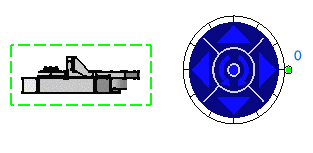
Click in the drawing to generate the view.
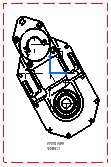

Define the
view orientation during view creation
When creating a view, you can redefine the orientation of its reference
plane using the available arrows.
This is the case when
generating a front view, an
isometric view or when generating
views using the wizard.
Open a 3D part representation and start creating a front view.
Click the right or left arrow to visualize the right or left
side, respectively.
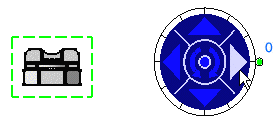
Click the bottom arrow to visualize the bottom side.
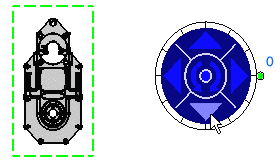
Click the counterclockwise arrow to rotate the reference
plane.
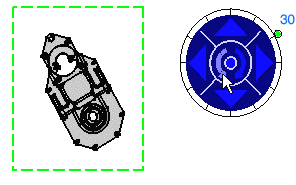
Drag the green knob to redefine the rotating angle. The default
increment value is 30 degrees.
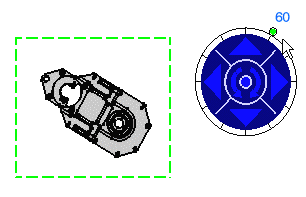
You can modify the increment value using the
contextual menu, which is available for the
green knob. To do this, right-click the knob and select
the desired option: - Free hand rotation: Lets you rotate the knob
in a free manner using the mouse, instead of snapping it to a given increment.
- Incremental hand rotation: Snaps the rotation
to a given increment (from 30 to 30 degrees, between zero and 330). This
is the default value.
- Set increment...: Displays the Increment
Setting dialog box. Enter the required value in the Increment
value field. For example, type 5 deg (for 5 degrees) and click
OK.
- Set current angle to:
-
0 deg: Sets the current angle value to 0 degrees.
-
90 deg: Sets the current angle value to 90
degrees.
-
180 deg: Sets the current angle value to 180
degrees.
-
270 deg: Sets the current angle value to 270
degrees.
-
Set angle value...: Displays the Angle
Setting dialog box. Enter the required value in the current
angle (deg) field. For example, type 30 and click
OK.

Create a front view with a local axis system
This functionality allows you to take into account a local axis system when
creating a view. That way, the origin of the generated view is the projection
of the origin of the local axis system selected in the view plane.
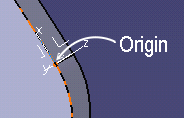
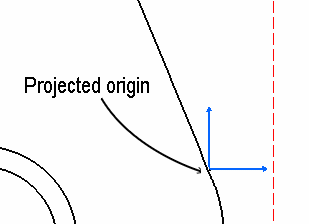
Click Front View
 in the Views toolbar.
in the Views toolbar.
In the part specification tree, select the local axis system,
Axis System.1.
Select one plane of the 3D part or a plane surface, to define
the reference plane.
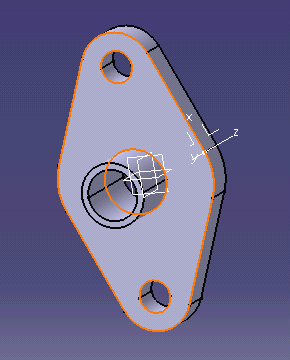
Click in the drawing to end the view creation. The part local
axis system appears in the view.
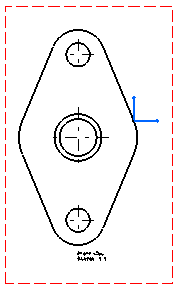

Create a front view from specific sub-bodies/sub-products
You can multi-select specific sub-products in a product and/or several sub-bodies
in a part to create front views displaying the selected elements only. These
multi-selected 3D elements will be previewed and then used as reference planes
for generating several front views.
Open a 3D product.
Click Front View
 in the Views toolbar.
in the Views toolbar.
Select one body, or press the Ctrl key and then
multi-select the desired elements in the specification tree.
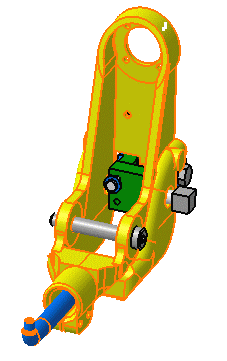
In the 3D, point to the geometry to choose a projection plane.
As you go over the geometry with the cursor, the oriented preview automatically
appears on the 3D document.
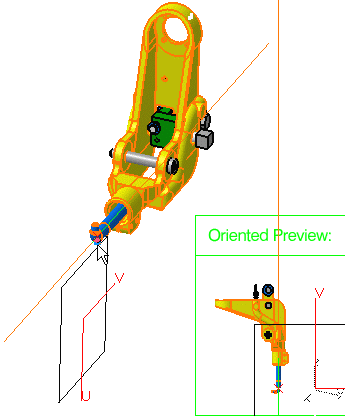
When the oriented preview corresponds to the projection plane
you want, click the plane to validate.
The front view is previewed. At this point, you can still
modify its orientation:

Click in the drawing to generate the view.
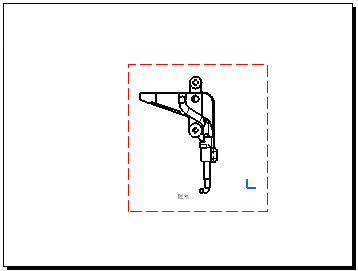

Create a front view using selection sets
Selection sets let you gain in productivity, particularly in the case of
large assemblies, when generating several views with numerous common features:
you can select and store these features once and reuse the selection set as
often as necessary without having to select the features again.
Open a 3D product.
Before you start creating views from selection sets, you
first need to create one or more selection sets for this product. For more
information, refer to Infrastructure User's Guide: Storing Selections Using Selection. For example, create a selection
set to store product screws.
Click Front View
 in the Views toolbar.
in the Views toolbar.
Activate the product representation and select Edit > Selection
Sets... In the Selection Sets Selection dialog box that
is displayed, select a selection set and click the Select button.
The selection
set items are highlighted in the 3D and in the specification tree. For more information, refer to Infrastructure User's Guide: Selecting Selection
Sets.
In the 3D, point to the geometry to choose a projection plane.
As you go over the geometry with the cursor, the oriented preview automatically
appears on the 3D document.
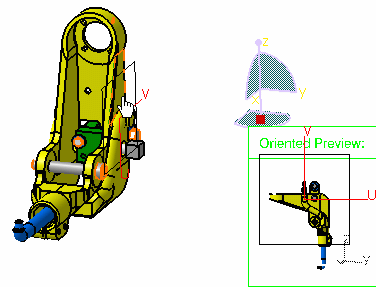
When the oriented preview corresponds to the projection plane
you want, click the plane to validate.
The front view is previewed. At this point, you can still
modify its orientation:
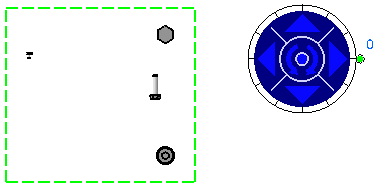
Click in the drawing to generate the view.
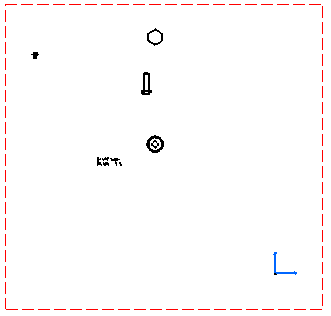
|
![]()
![]()


![]()
![]()














